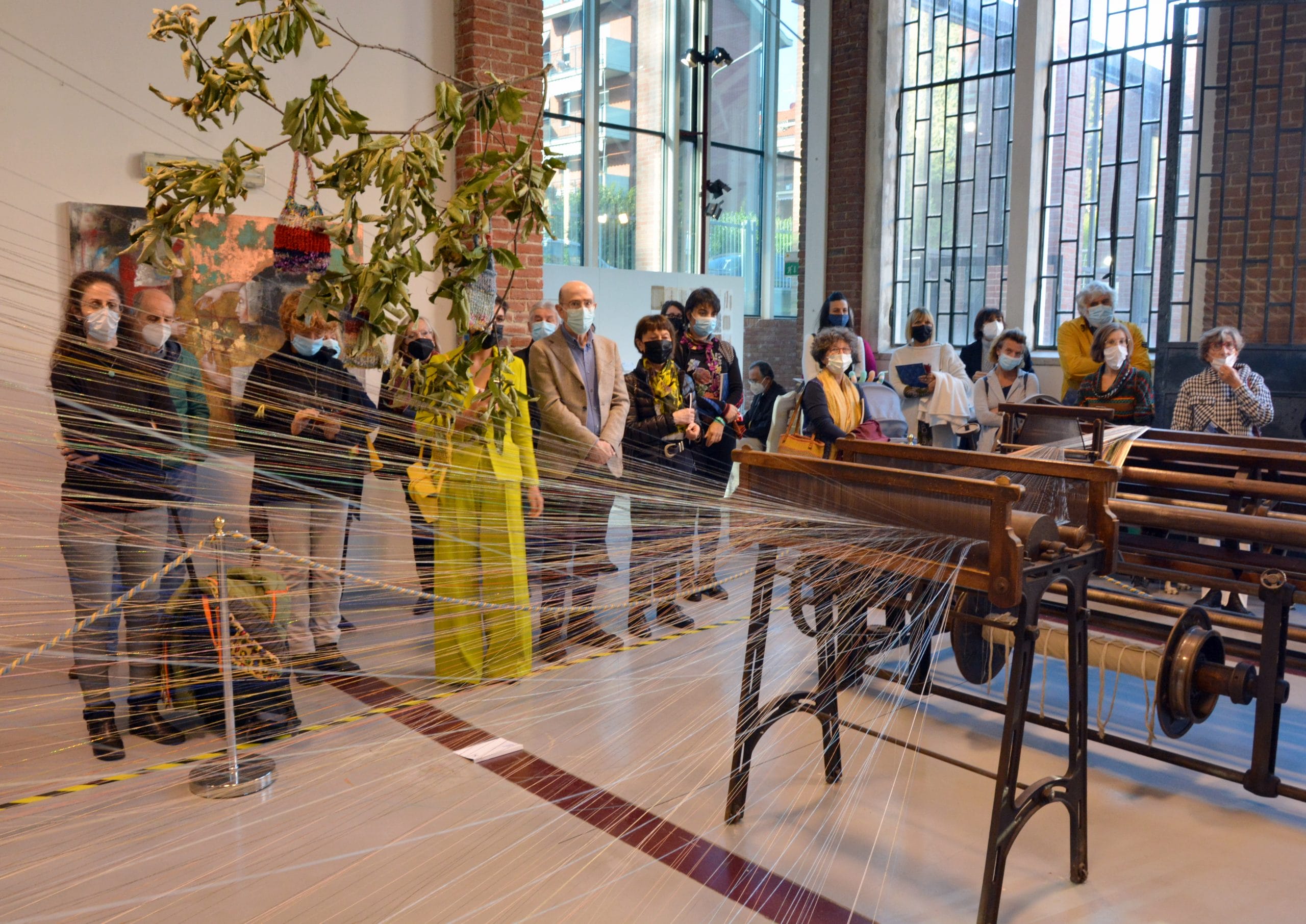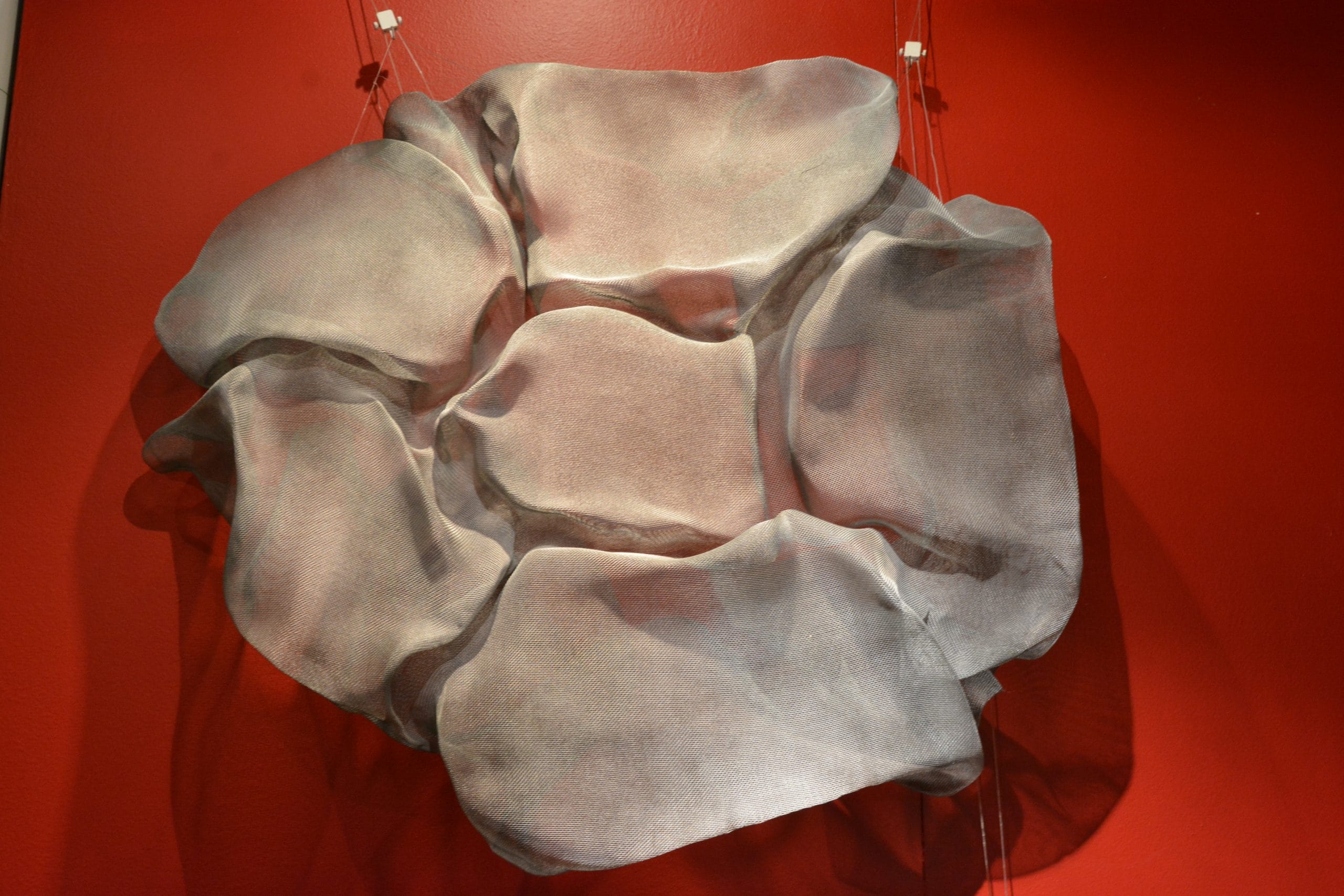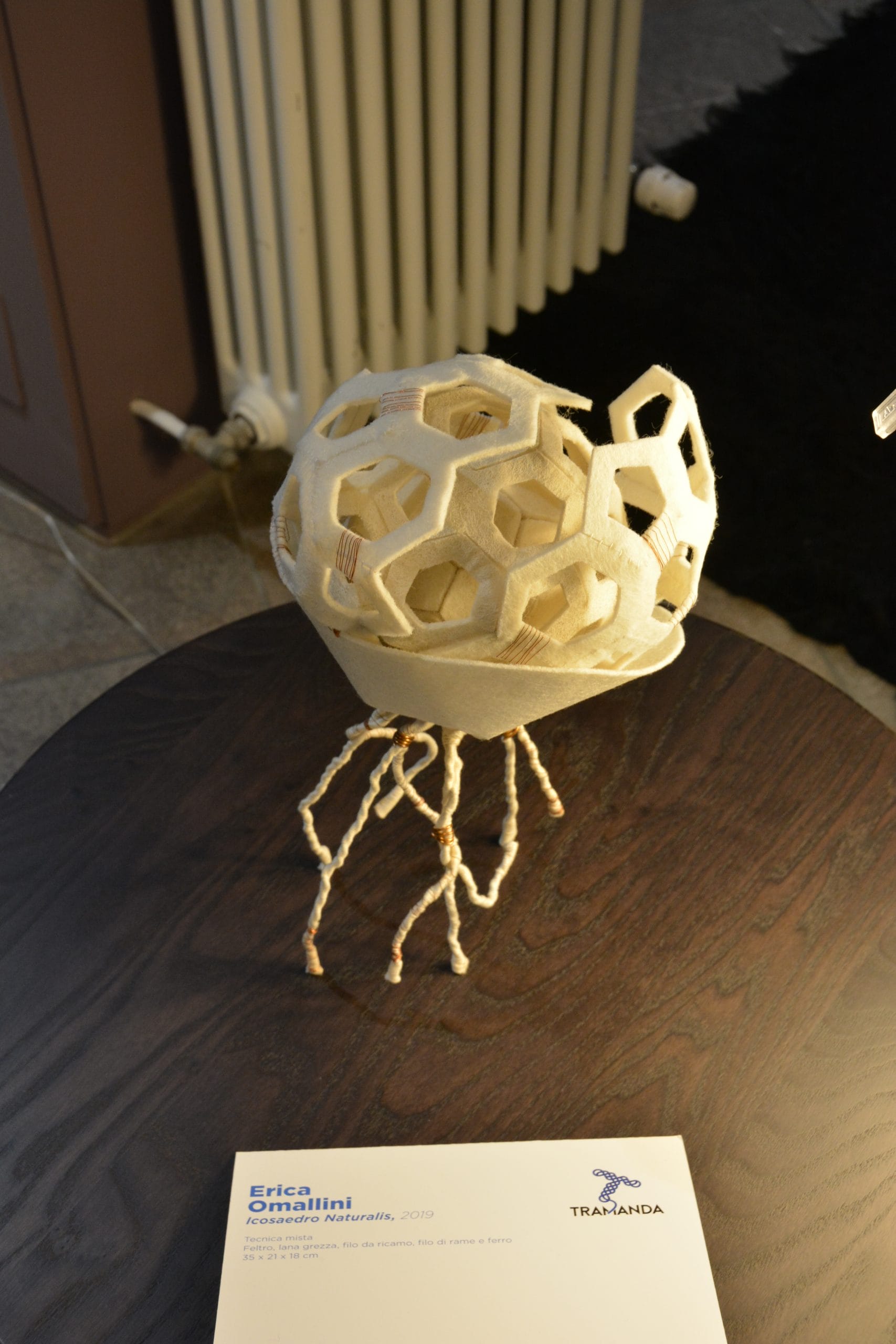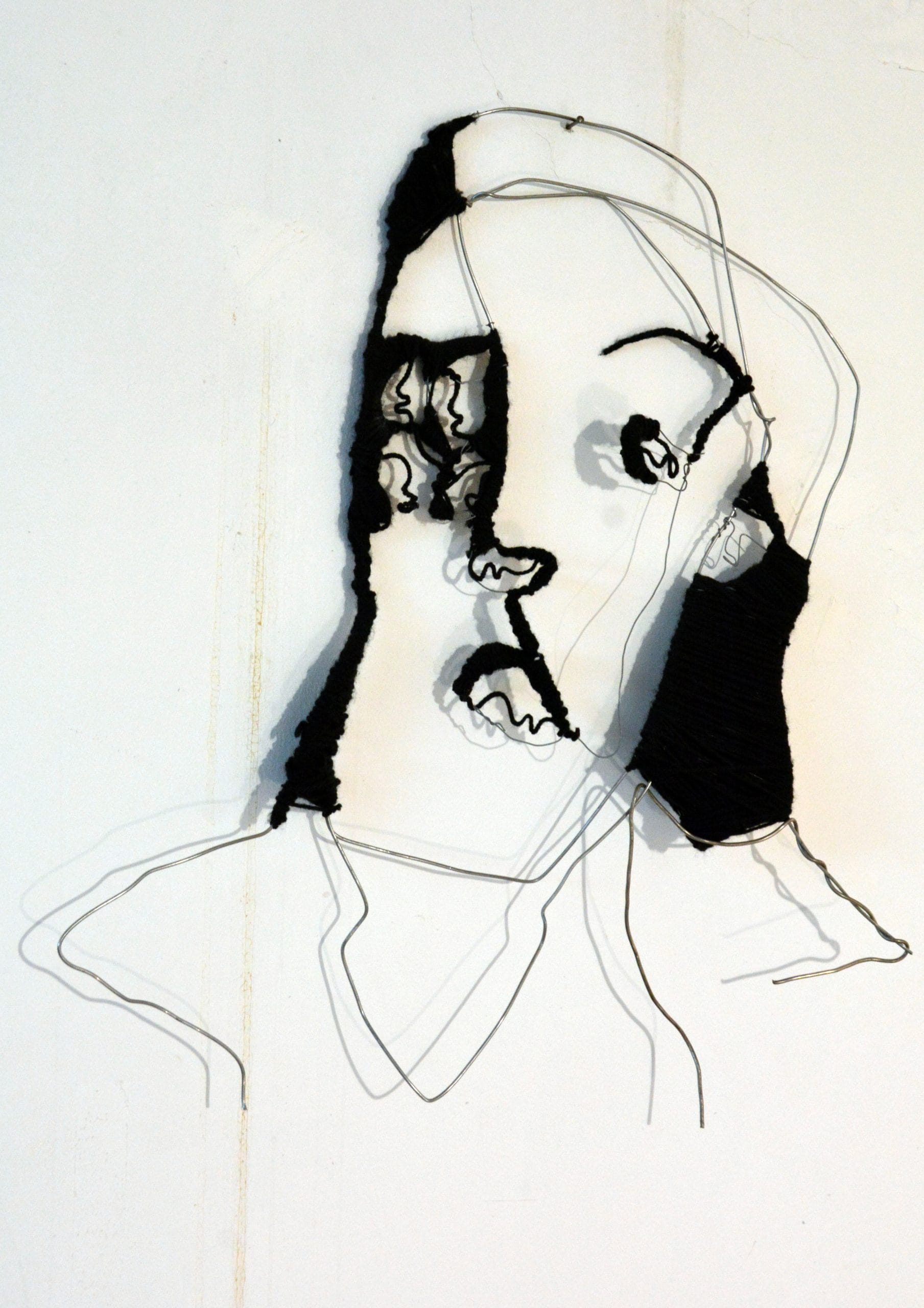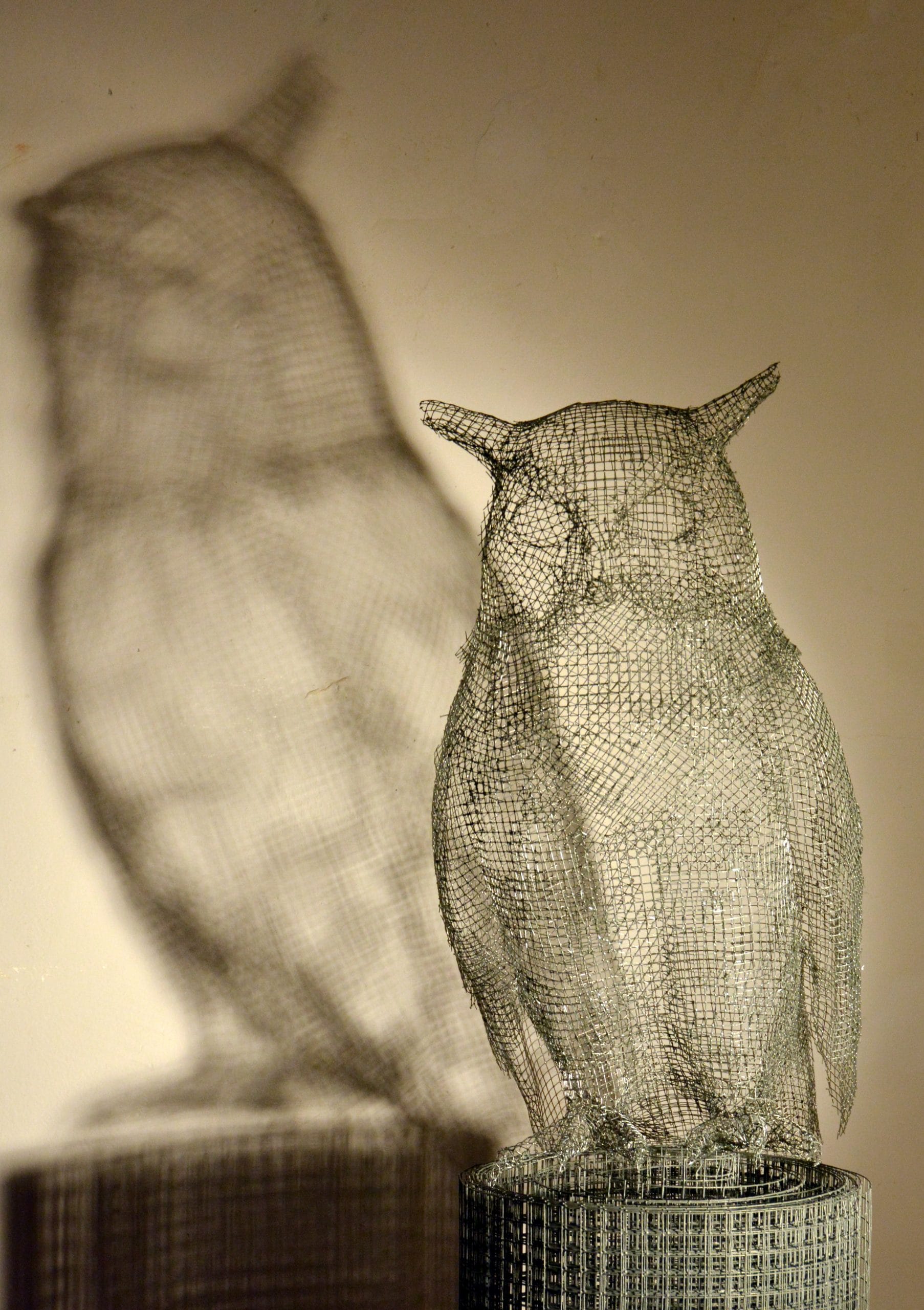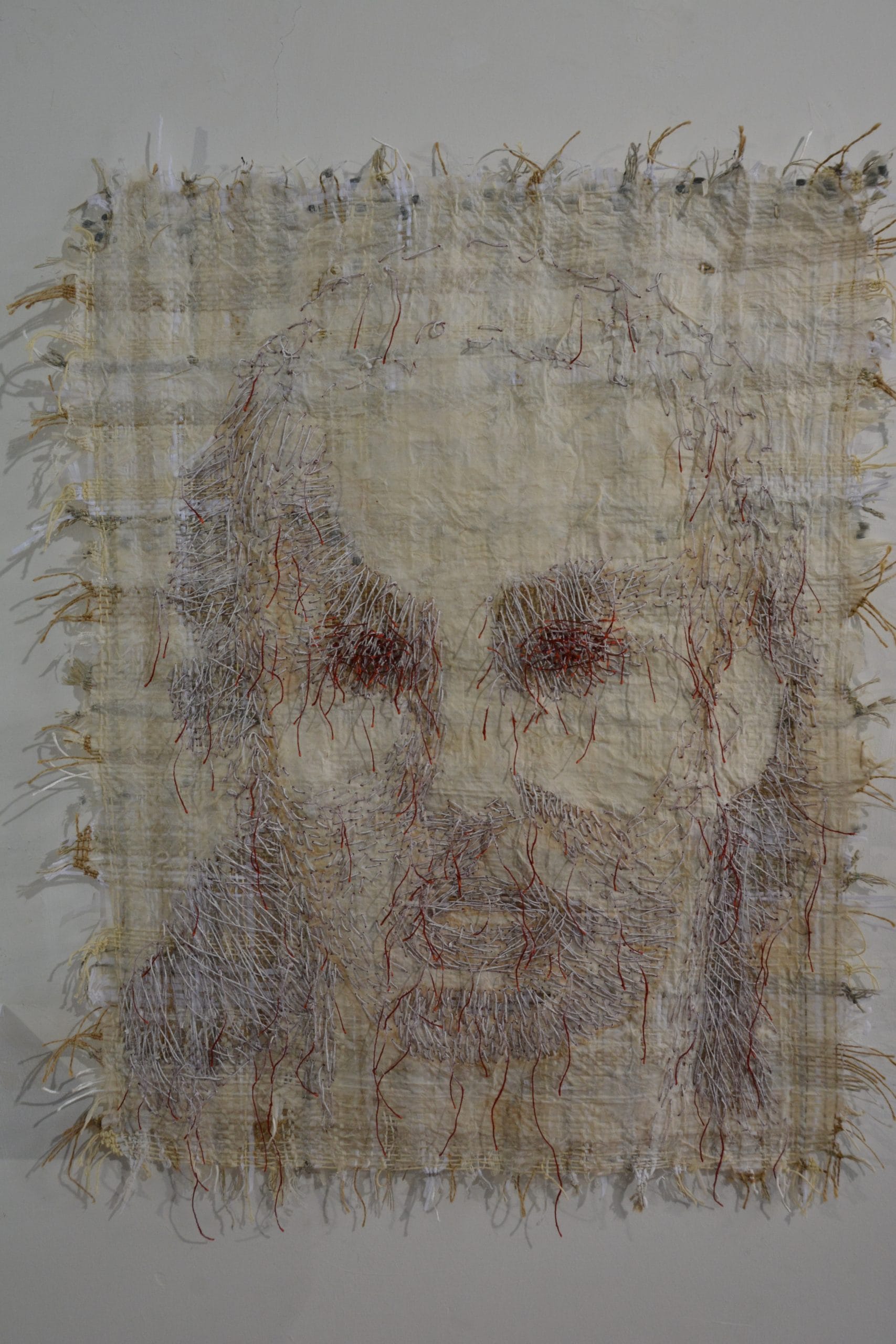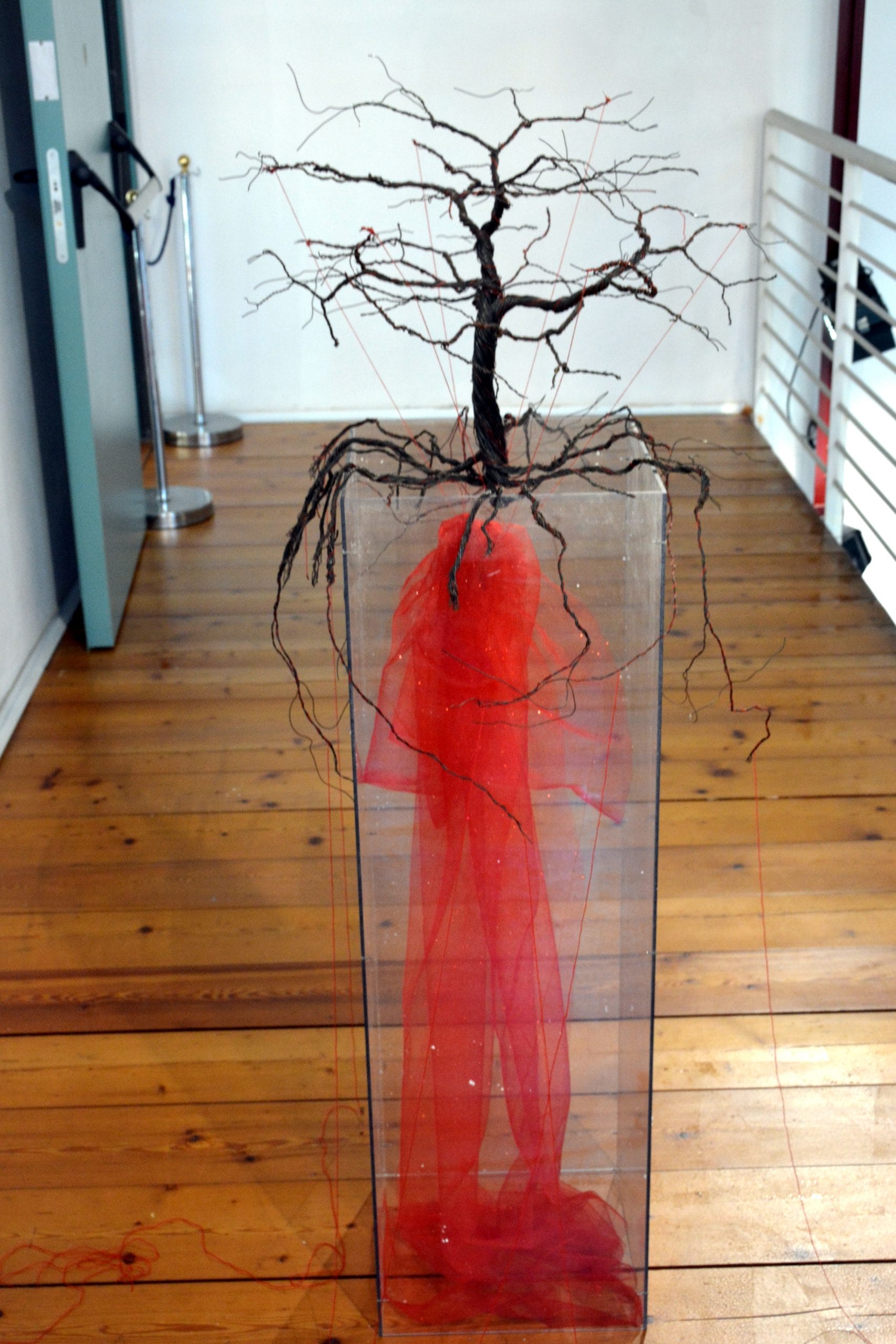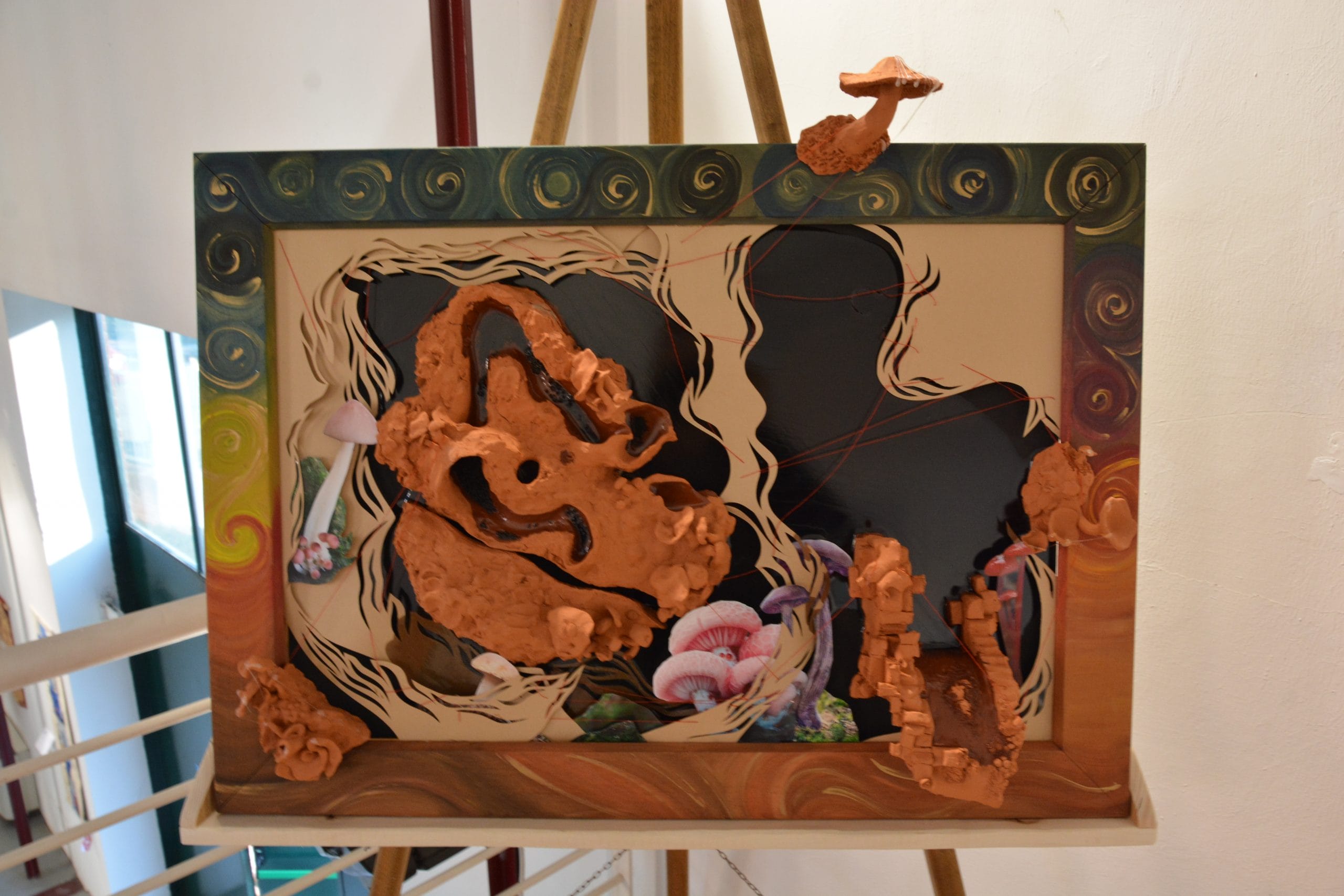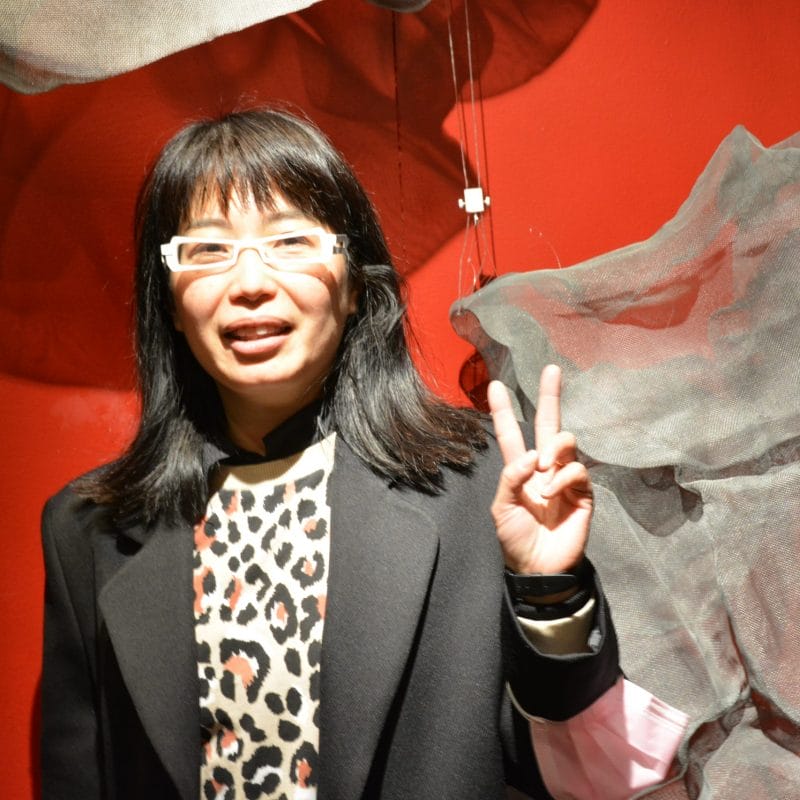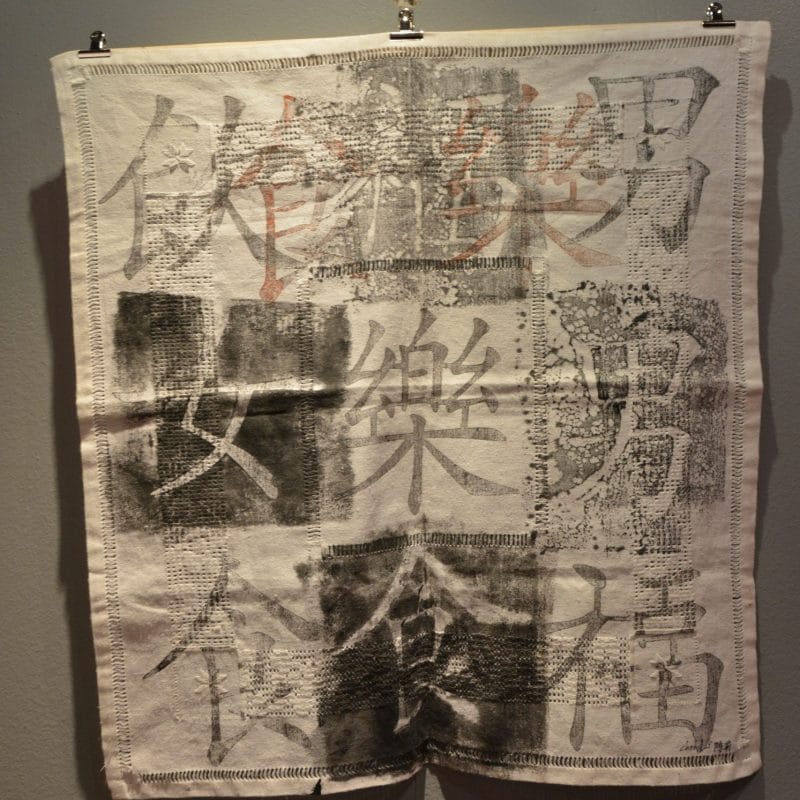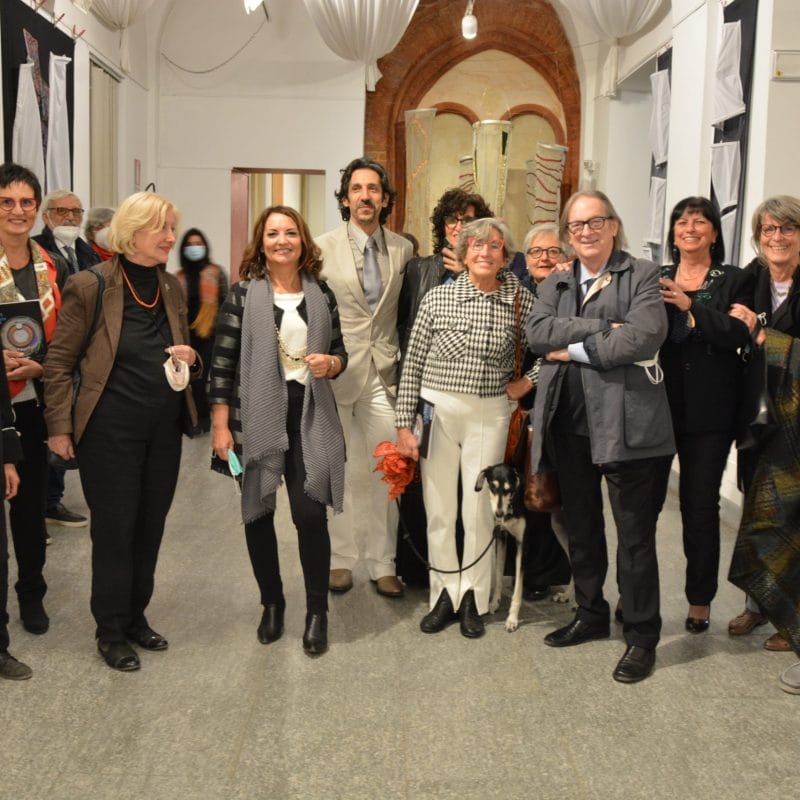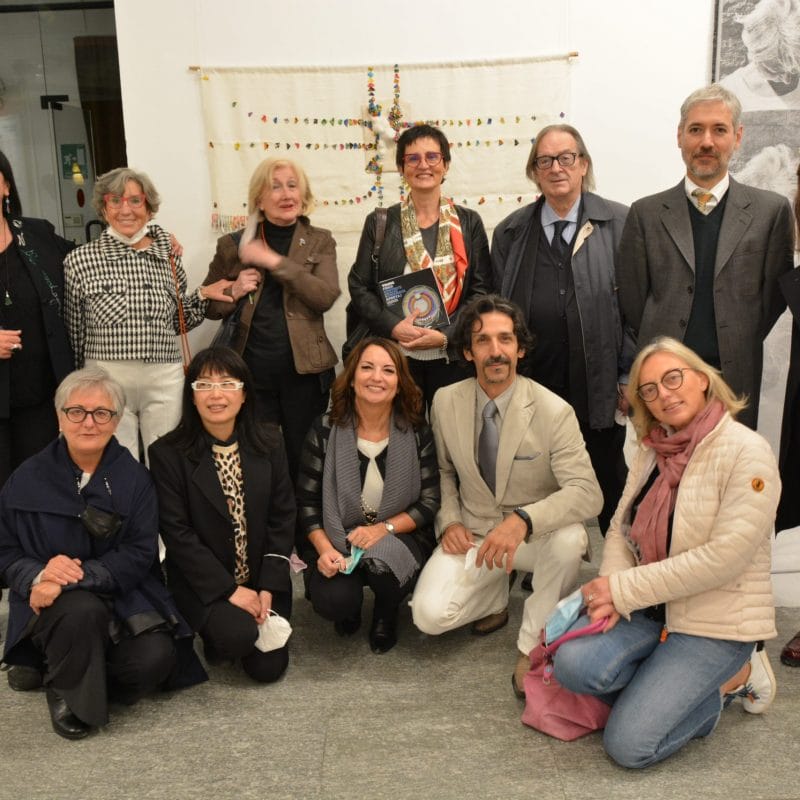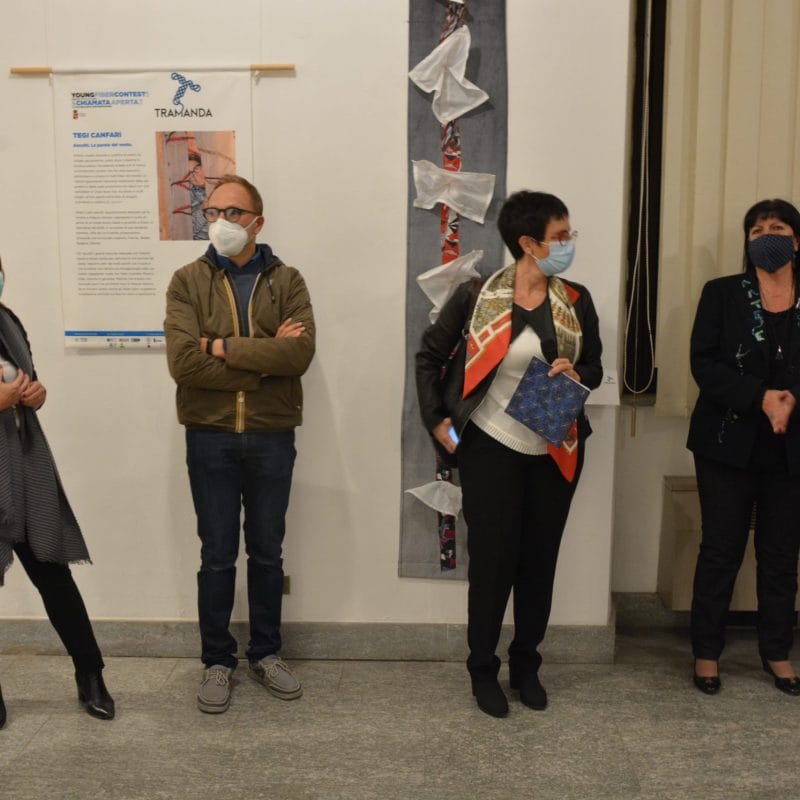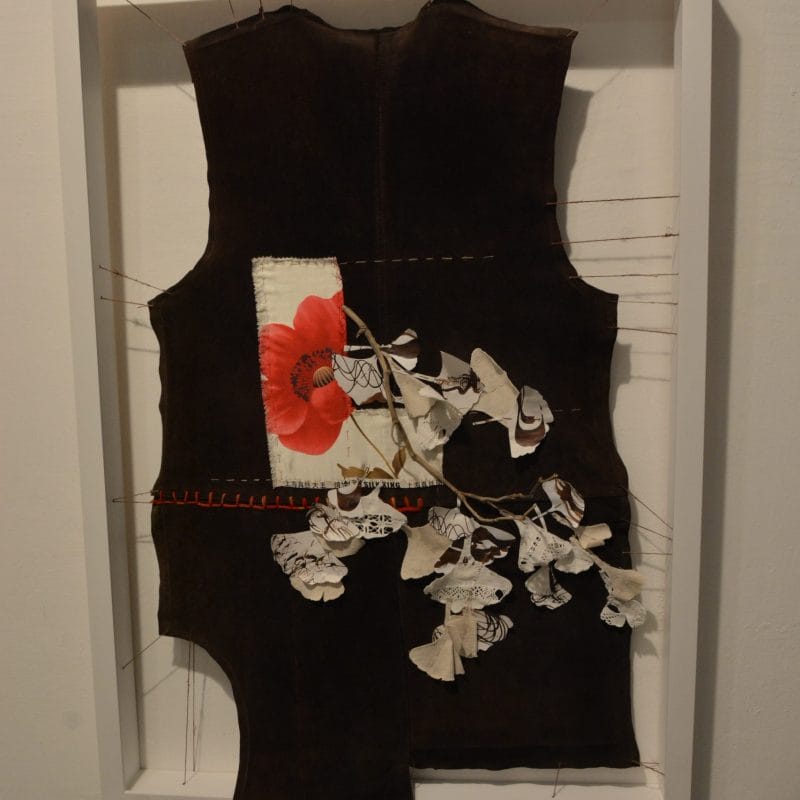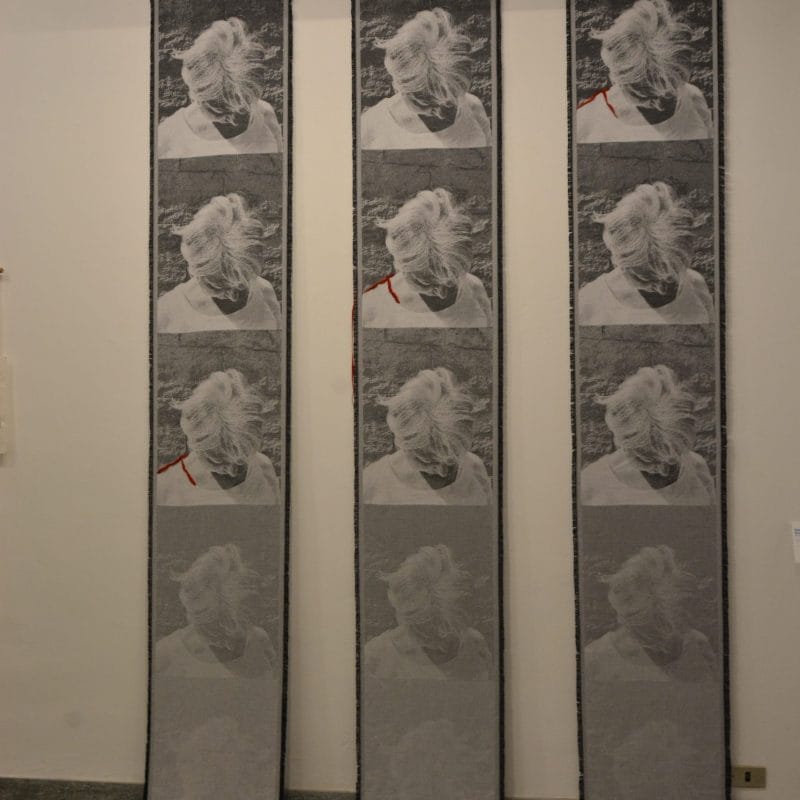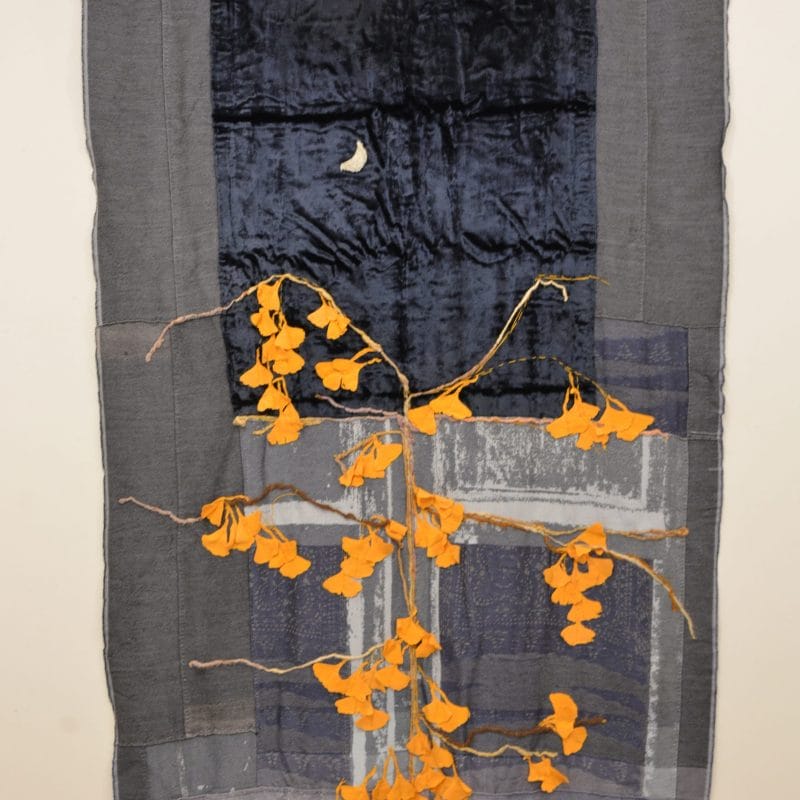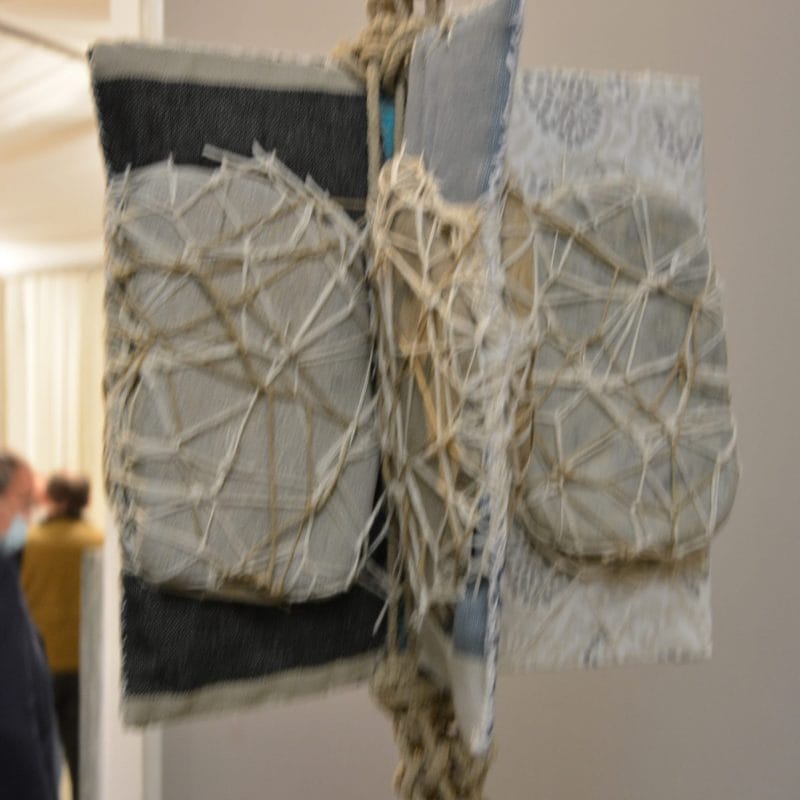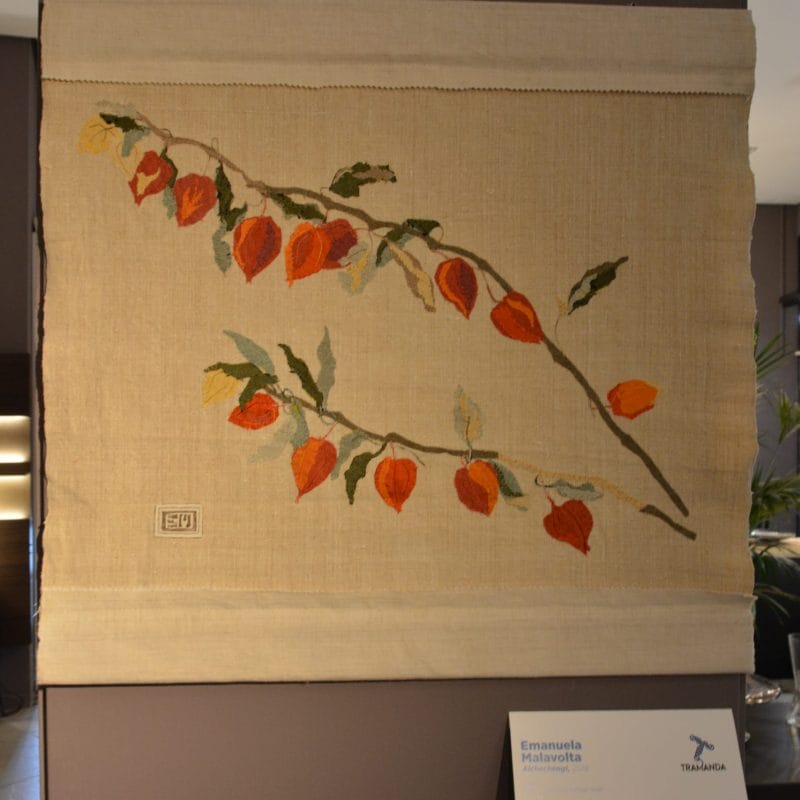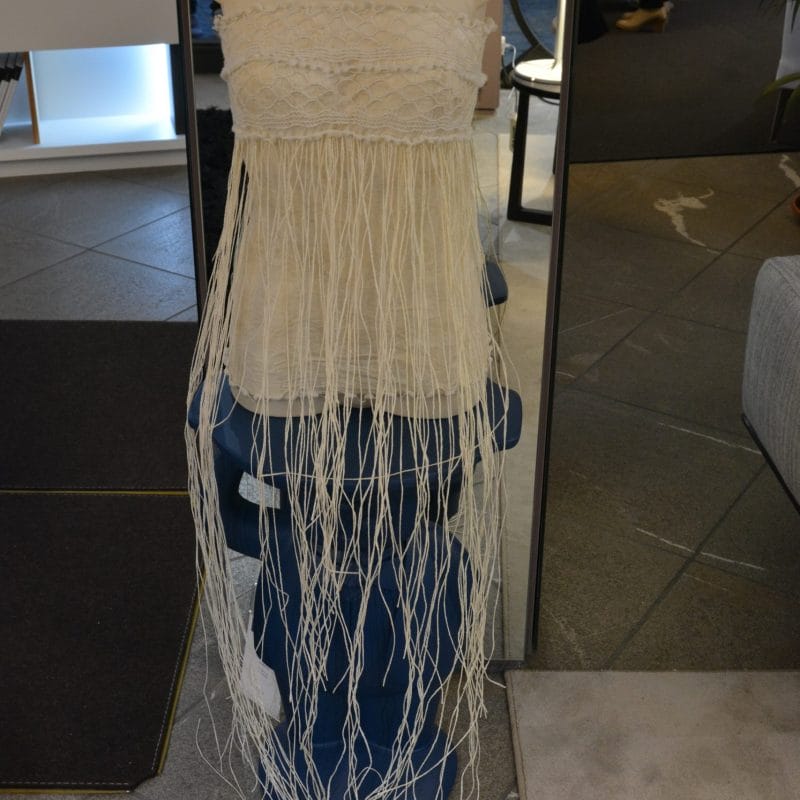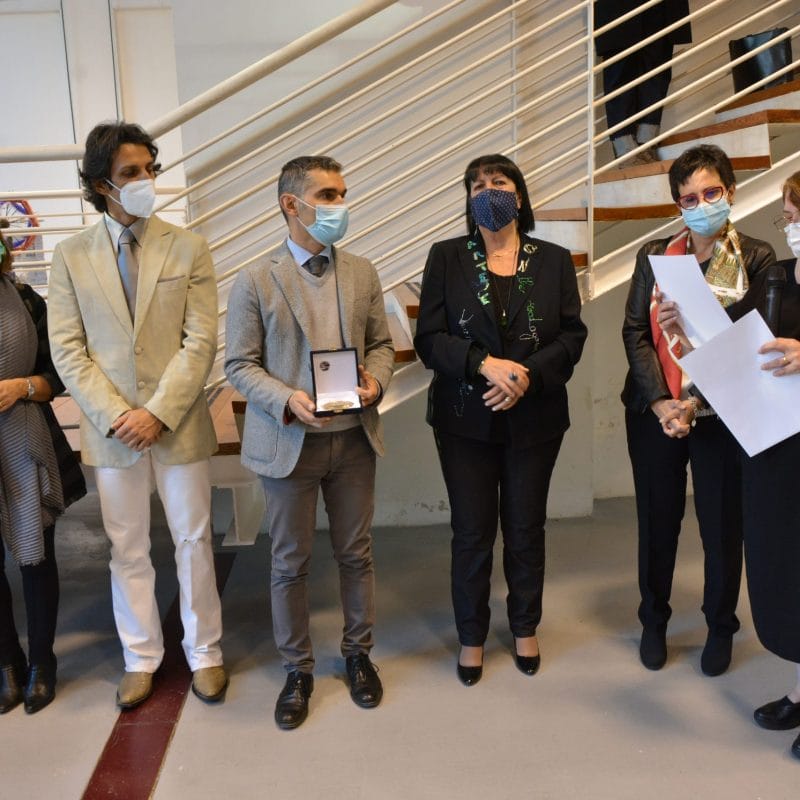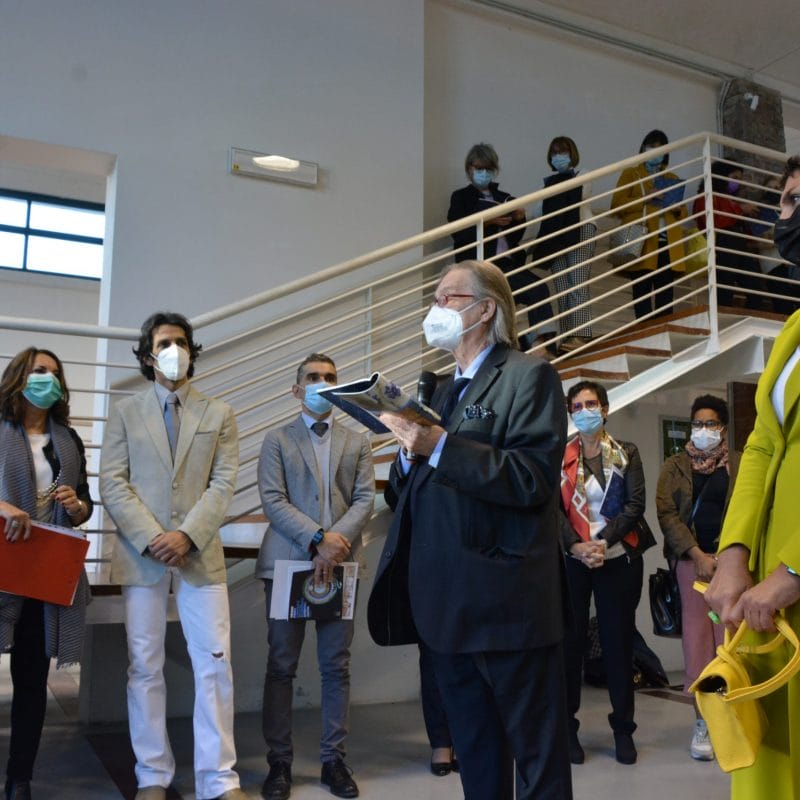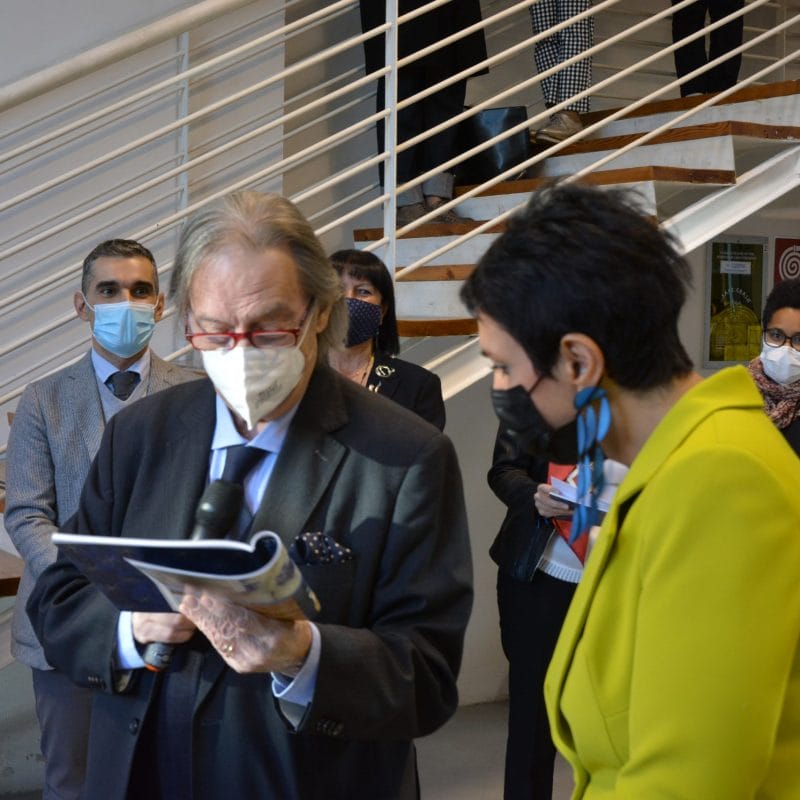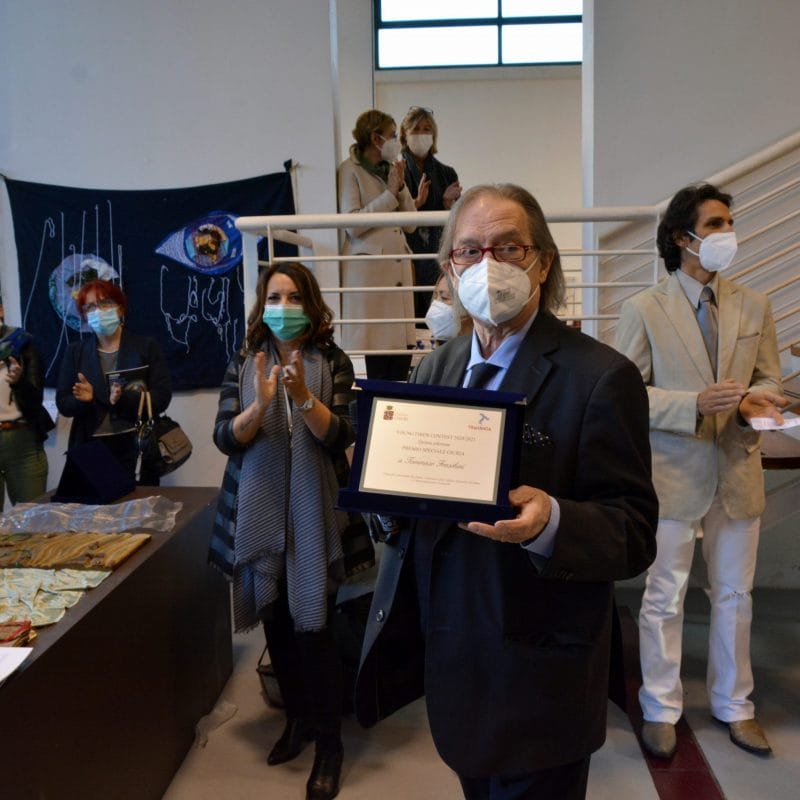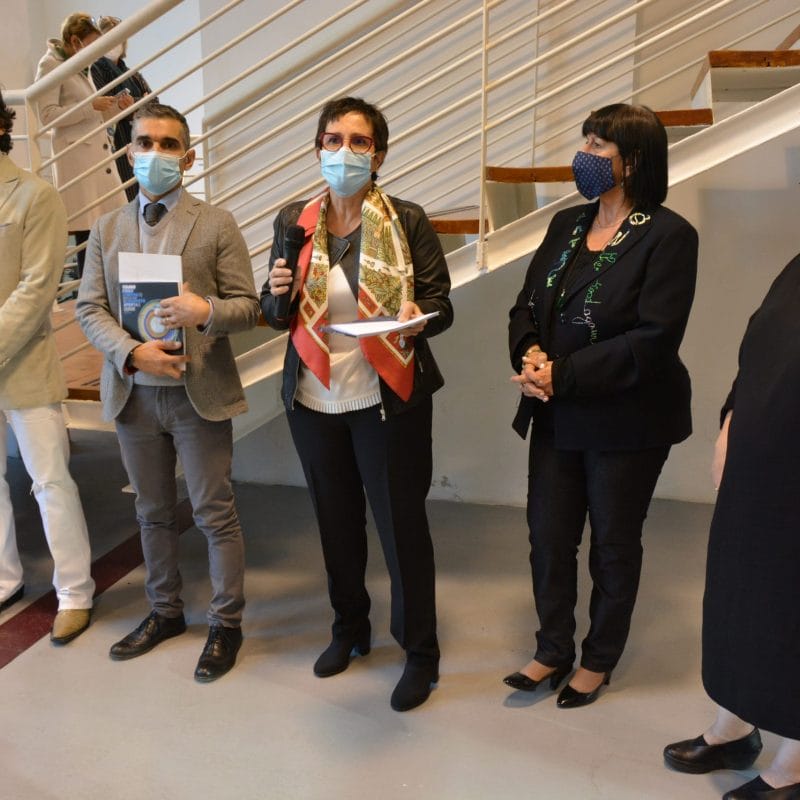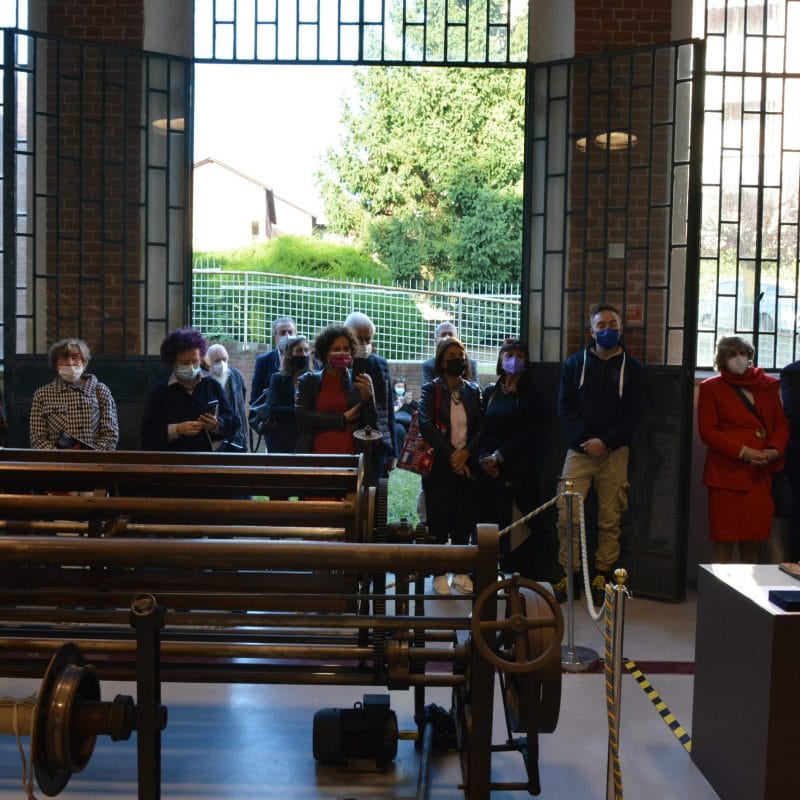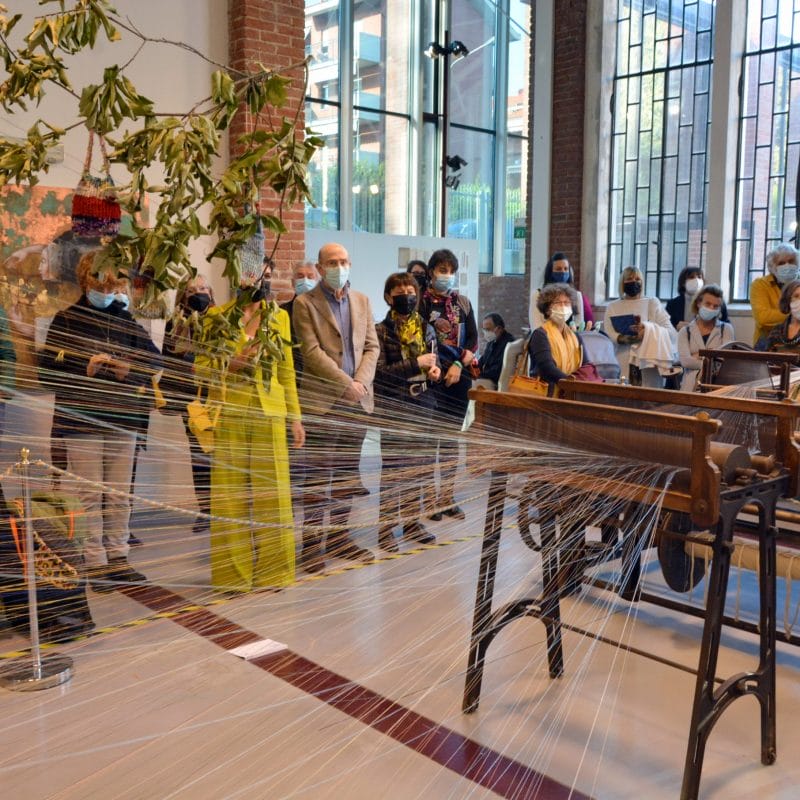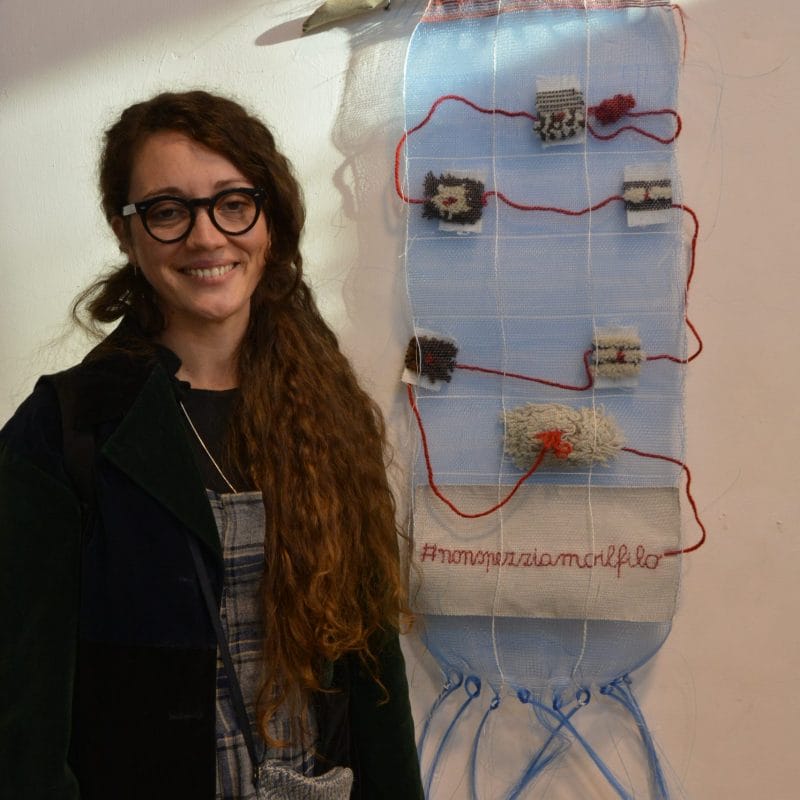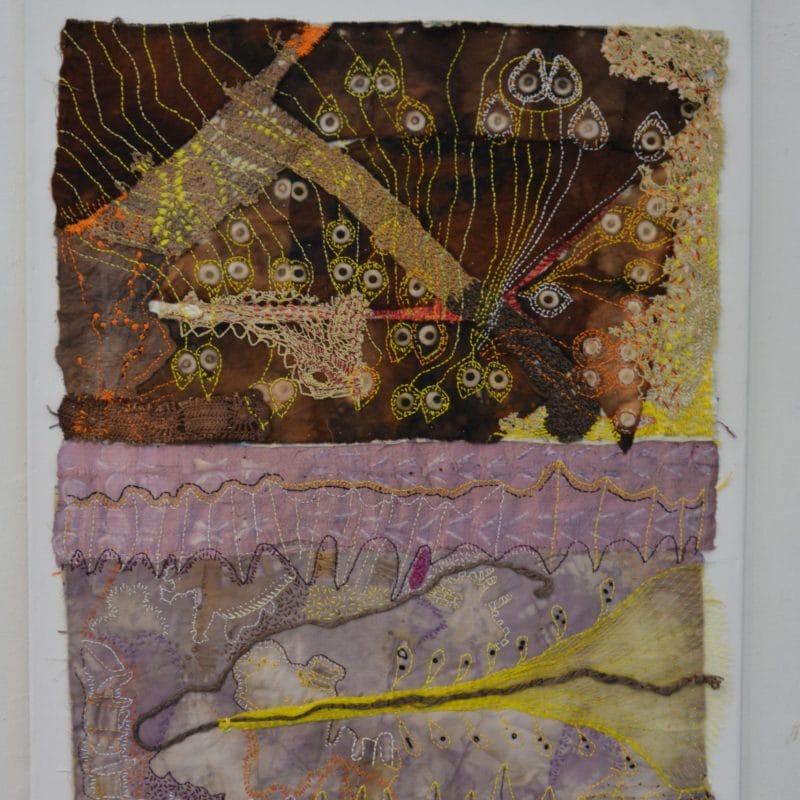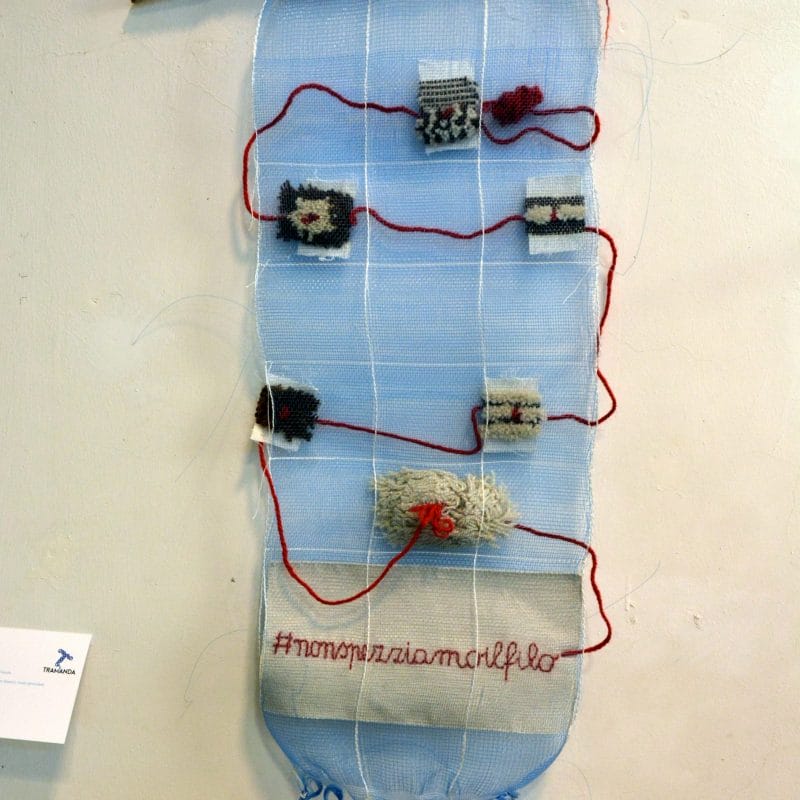TRAMANDA BACKSTAGE
*ph.credit LUCIANO BERRUTO
We set out to explore TRAMANDA backstage.
Tramanda, in Chieri (TO), is one of the oldest and most prestigious Italian events dedicated to Fiber Art.
To understand how the 2020 edition (postponed to 2021 because of the pandemic) took shape, we’ve asked the jury’s members, inquiring beyond the boundaries of the event, to trace an overview upon this specific language of contemporary art and its evolution.
ph.credit LUCIANO BERRUTO
We asked Angelo Mistrangelo, vice-president of the jury, what marked this edition: “the long path of the art exhibitions that encapsulates the climate and the essence of fibre art’s visual culture and the TRAMANDA exhibitions has developed with a continuous renewal of languages and experiences, reaching, in this latest event, a strong international profile.
The artworks on show feature in-depth expressive research, where the materials act as a crucial support and complete the projects. Materials are addressing a reality that matches established masters to emerging authors, a personal vision’s energy joint to a choral narration, among reflections, colours and the magic of underlying creativity”.
ph.credit LUCIANO BERRUTO
Concerning the parameters used to select the finalists and the motivations for the prizes, Mistrangelo explains: “The selection committee aimed at a unifying vision and interpretation of the works and compositions presented by the artists. President Fiorenzo Alfieri (recently passed away) stressed the importance of youth creativity as an unquestionable means of future success in the artistic and professional world. Therefore, the subject’s interpretation, materials and lyrical content were the criteria for the judges to make a personal and measured evaluation. Each artwork was chosen and awarded according to the set guidelines. These result from an overall involvement around the aspects and expressive value of the works submitted to the Commission. In a nutshell, we noticed a greater openness towards contemporary art with materials that transformed, even if only in part, the traditional language with copper and iron wires, collages, felts, discarded objects, photographic fragments, to name but a few.”
ph.credit LUCIANO BERRUTO
Valeria Scuteri, established fibre artist and a member of the jury, describes her experience as follows: “The most interesting, or rather healthy, aspect of this participation was to realise that beauty exists and is successful, which strengthened and reassured me. Speaking of “beauty” I don’t mean only its aesthetic/artistic connotation but rather the beauty of people as a whole. We are daily overwhelmed by bad news, behaviour, actions in a race with a time that often leads to superficial (or self-interested) evaluations. Being part of this jury, with a group of people who naturally place respect first, is no small matter. Mutual respect, exchange and assessments regardless of roles.
It was reassuring to work with jurors capable of choosing beyond their personal taste and ideology, a fundamental requirement, in my opinion. The members focused on the artists, evaluating whether the presented message corresponded to and was delivered through the best art form, whether his emotional, rational, aesthetic feeling and his artistic urgency are genuine, whether there is the proficiency of making and not only the willingness to show off.”
ph.credit LUCIANO BERRUTO
Commenting on the evolving trajectory of Fiber Art, she says: “For quite a few years now, I don’t think there are any more limits to fibre art. The important thing was to get to this point: to be truly acknowledged and not only by a small number of enthusiasts but as a cultural, artistic language, like other art forms. Then, finally, the art market (hence those who revolve around it) became aware of fibre art. No longer just patches, threads, sewing, fabrics and macramé, but also new materials, techniques, installations, performances, and suitable spaces.”
In her double role, Valeria Scuteri sees a growing interest in fibre art: “In my humble experience, fibre art has been a difficult and sometimes painful process of labour and delivery, at least in our country. In addition to intuition and talent, the first fibre artists and those who believed in them were courageous enough to challenge prejudices and trends, as is always with new artistic movements. As jury’s president in the three previous editions of TRAMANDA and as a jury member of the current one, I have witnessed that these artists are now rewarded. As well as having an exquisitely artistic context, they have influenced fashion, crafts and design. What was borrowed has been fully given back. I’m delighted for the mature, motivated and independent new generation of young artists. I am delighted to see the following among motivated, mature, independent young artists. It is no more an awkward “déjà vu” but art that speaks of its own time in its own contemporary way. Artists who understand the needs of a generation, otherwise there is no explanation for the common characteristics of the works that entered the competition, even though there was no specific theme. Today, not only in galleries and museums, we witness the desire to exhibit Fiber Art. The intuition of the early pioneers was correct, and, once again, when art is authentic, it sooner or later gives rise to a spontaneous response. How much it has grown is also proven by the success of a dedicated magazine like yours”.
ph.credit LUCIANO BERRUTO
Jury member Maria Francesca Garnero also speaks of growing interest and evolution: “I can ideally outline a diagram in which the line indicating the level of the received works artistic quality is constantly rising and which also represents the geographical extent of participation. With every edition, the jury has been increasingly favourable in examining the artists’ proposals and has observed how the artists’ area of origin has widened geographically and in terms of the schools they attended.
Sensitivity and attention to the fibre art language can also be depicted with a chart with a rising line that grows almost parallel to the increase in events dedicated to this form of art, so delicate and intriguing, to use two straightforward terms belonging to the common language.
In fact, creating space for solo and group exhibitions, meetings with critics and artists, internships and workshops, has allowed fibre art to reach an ever-wider audience. In Chieri, this aim was met with Martha Neuwenhuijs’ idea to establish a specific collection. The Collection provides a regular availability of works. In addition, it offers the stimulus to organising exhibitions and events, which are regularly scheduled to stimulate the visitors’ interest to help him deepen his knowledge of this medium.”
ph.credit LUCIANO BERRUTO
Silvana Nota, juror and Tramanda’s artistic director, explains the difficulties faced by the current edition: “This year Tramanda has been challenging. We have never stopped working on the project, but it was interrupted: much time went by between the jury’s meeting and the exhibition’s opening; this has been a challenge for all of us.
However, our close-knit and always constructive working team has never lost faith. The most exciting and satisfactory thing has been witnessing the show take shape with new developments.
The artists followed along, bringing fresh air and rising quality. Looking back at the works to write the texts, I was surprised to discover a sort of intuition; it was like they were waiting for something to happen. The artworks were, in fact, charged with expectation, peace, the unity and beauty between past and present.”
We’ve asked Silvia Nota to comment on the relationship among the young artists and the textile medium: “From my point of view, the new generation demonstrates e great interest in Fiber Art, or for the use of the textile medium in their work. This tendency is evident in the Young Fiber Contest that showcases the ever-growing involvement of young artists with this art language. Another exciting element is that they often use fabric or other flexible materials without even knowing the history of Fiber art, discovering it during the exhibition and becoming passionate about it. Very young people like the experimental aspect of fibre art, despite its historical, ancient core; think about its research and the enormous range of results.
ph.credit LUCIANO BERRUTO
Massimo Tiberio, architect, member of the jury and installation manager, gives us his point of view: “The presented works showed a solid visual and expressive diversity that allowed us to provide wealth and variety to the exhibition. Diversity has been the main feature: different formats, sizes, techniques, ways of expression. This is precisely the primary source of inspiration for the final layout. In addition, the presence of two-dimensional relief and all-around works has allowed us to give vivacity and dynamism.”
We’ve asked Tiberio the criteria he followed to organise the five locations and as many setups. He stated: “The choice of sites has been made by the exhibition’s curator because of their uniqueness: the Vajro is the contest’s historical headquarter. It has always been the ideal location for this event. The works exhibited here has been selected by the jury. As in the previous editions, “Bonetto design” displays the artworks related to design. This choice creates synergy between content and context. The corpus of the exhibition is clear, without the possibility of misinterpretation. Contemporary Fiver Art is at Palazzo Opesso, and Casa Martini presents a thematic exhibition with works from the Civic Collection of Fiber Art by Chieri.
When it comes to the display design, I’ve applied different processes and approaches to create effective synergies to the best use of the individual works and the intelligibility of the specific exhibition. All locations are significant and have strong characters and personalities. If I’d kept the same design line for all the displays, the exhibition’s expressive result would have been less effective and, above all, it would have been misleading, with less emotive results. To ensure the best fruition and allow to correctly convey the poetics of each exhibition, my design approaches have been diverse.”
ph.credit LUCIANO BERRUTO
At Imbiancheria del Vajro, the display intended to spatially translate the concept of “cross the border” that emerged strongly from the poetics of the exhibited works. “Cross the border” was meant as freedom and the opening of every part towards the others and the context. The architectural boundaries of the Imbiancheria are overcome by erasing the subdivision into sections or typological areas (a feature of Tramanda’s previous edition). Inside the Vajro, an open and unique dialogue-exhibition space is created, without cognitive limits: a universal space within which works, through their poetics and expressiveness, can weave silent and mutual dialogues escaping the physical limitations of the museum container.
Varjo’s architecture thus becomes a flexible continuous space without closure. As a result, the Young Fiber Contest’s artworks and the open call’s ones freely interact without hierarchies, limits, or barriers.
ph.credit LUCIANO BERRUTO
Palazzo Opesso installation process was more complex due to the many site-specific works. This form of installation relates and depends directly on the space in which it is conceived and set up; in fact, it was a design choice not to intervene and overload the exhibition spaces with props that could close and limit the volume perception of the areas. Instead, a dynamic perspective that supported and emphasised the interaction between the works and their different locations within the Palace was created to give life to a peculiar “cultural performance”.
At Casa Martini, the choice was to reduce the use of foreign elements to dive deeper into the Genius Loci’s sensitivity, thus demanding each artwork’s evocative power and its specific characteristics to create a dialogical interaction between content and container.
At the Museo del Tessile, I wanted to create an organic and synergistic path with the museum context without intervening in its layout. Therefore, the works were distributed to create a linear exhibition adding the residual spaces of the museum to weave a harmonious counterpoint in dialogic tension with the museum artefacts.”
This has been a very complex display; as Tiberio states: “When you are designing the production of a fibre art exhibition, you have to face many difficulties: the technical and composition sides and the management. Specifically, these problems are emphasised by the types of art pieces on display and the architectural features of the locations. We deal with very different works, which creates difficulties because each one needs its own space of perception that is not always proportional to the work size. To allow room to perceive a piece, sometimes, you must create accessible areas among the works. However, while navigating the exhibition space, the visitor must get constant input and stimuli. The setup needs to convey a general feeling of harmony between the parties to keep his interest alive. Tramanda has further complexity making everything even more complex: the exhibitions spaces have solid personalities and essential architectural and cultural elements. All these elements would complicate the understanding of any exhibition.
From a technical point of view, the Fiber Art pieces, ranging from two-dimensional tapestries to three-dimensional aerial sculptures with weights from a few grams to many kilograms, require careful design when installed. Furthermore, the event’s headquarters, being a museum or historical site, also have technical constraints. The design does not only concern how to arrange works, define the visual and cultural image of the exhibition, but also to find specific installation methods, particular and innovative for each location and within the same space. Each artwork and each area with its own specific requirements.” The great synergy between the various professionals who have shown commitment, competence, talent and passion to this new edition of Tramanda allowed to create an articulated and rich event despite the many difficulties.
TRAMANDA can be visited until January 15th 2022.
Info www.comune.chieri.to.it/turismo-cultura/tramanda-2021
ph.credit LUCIANO BERRUTO

